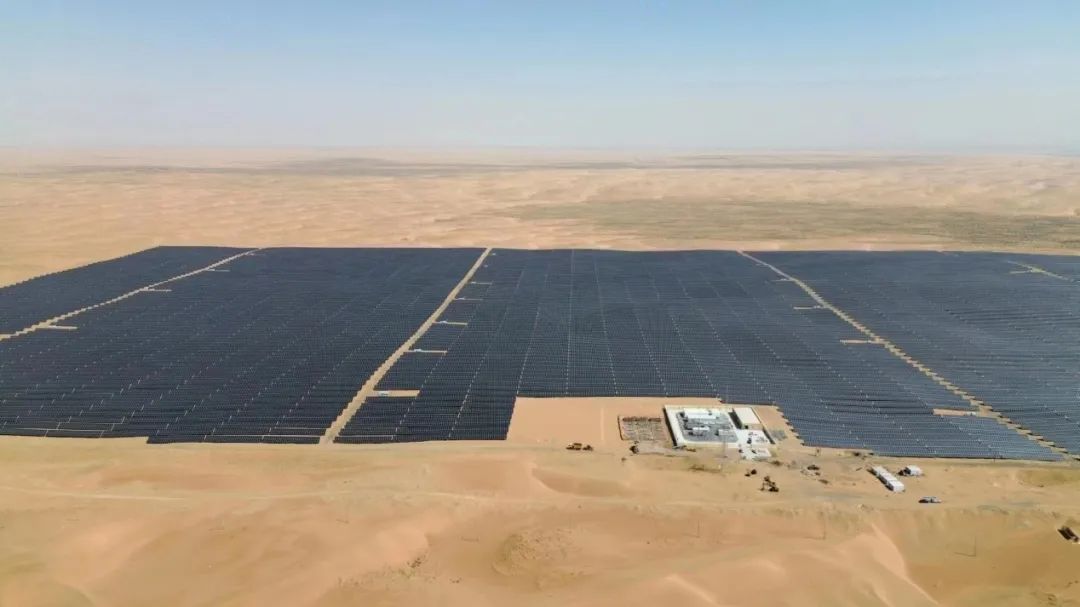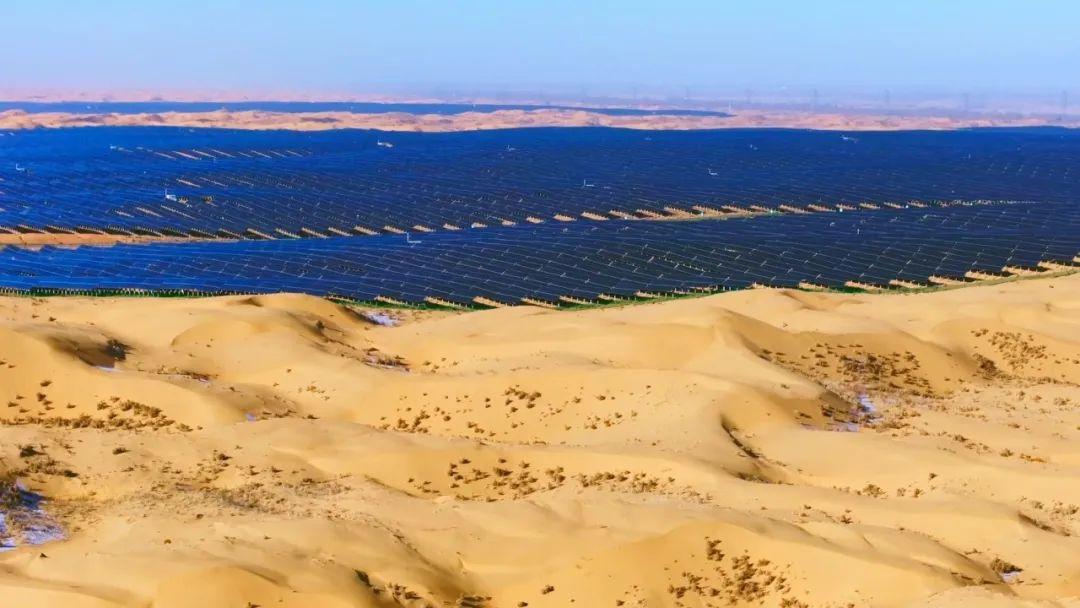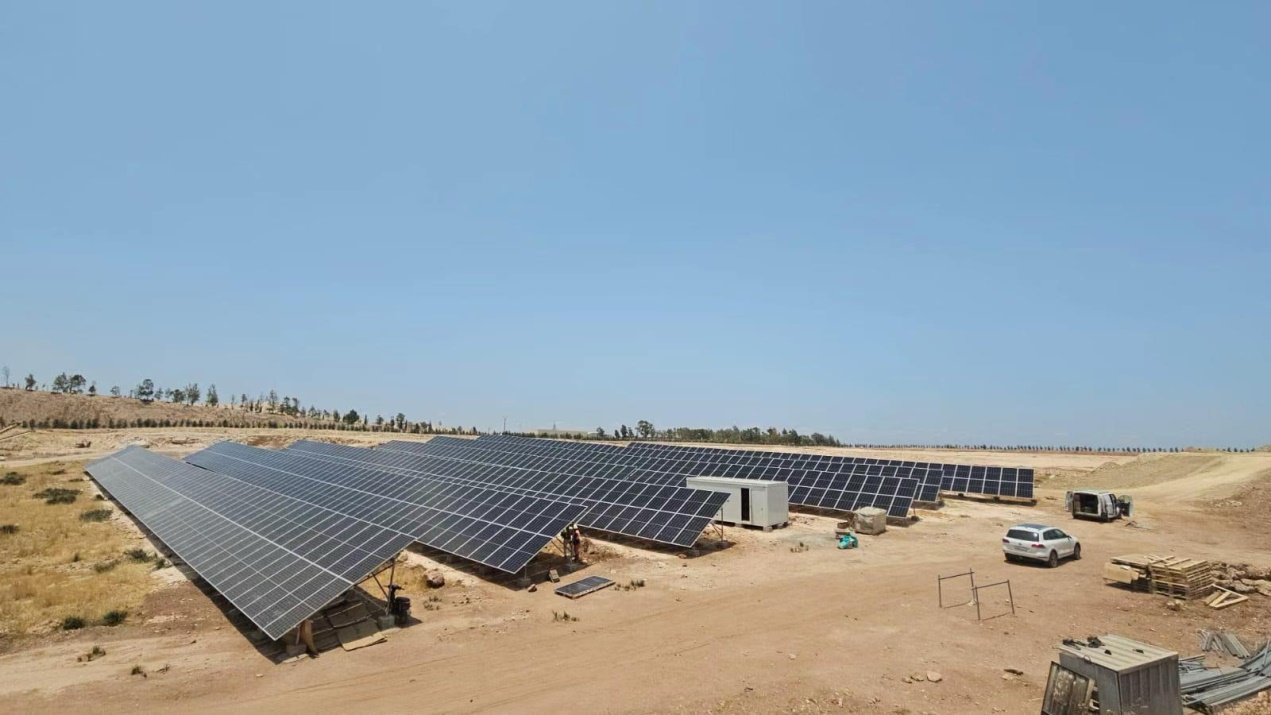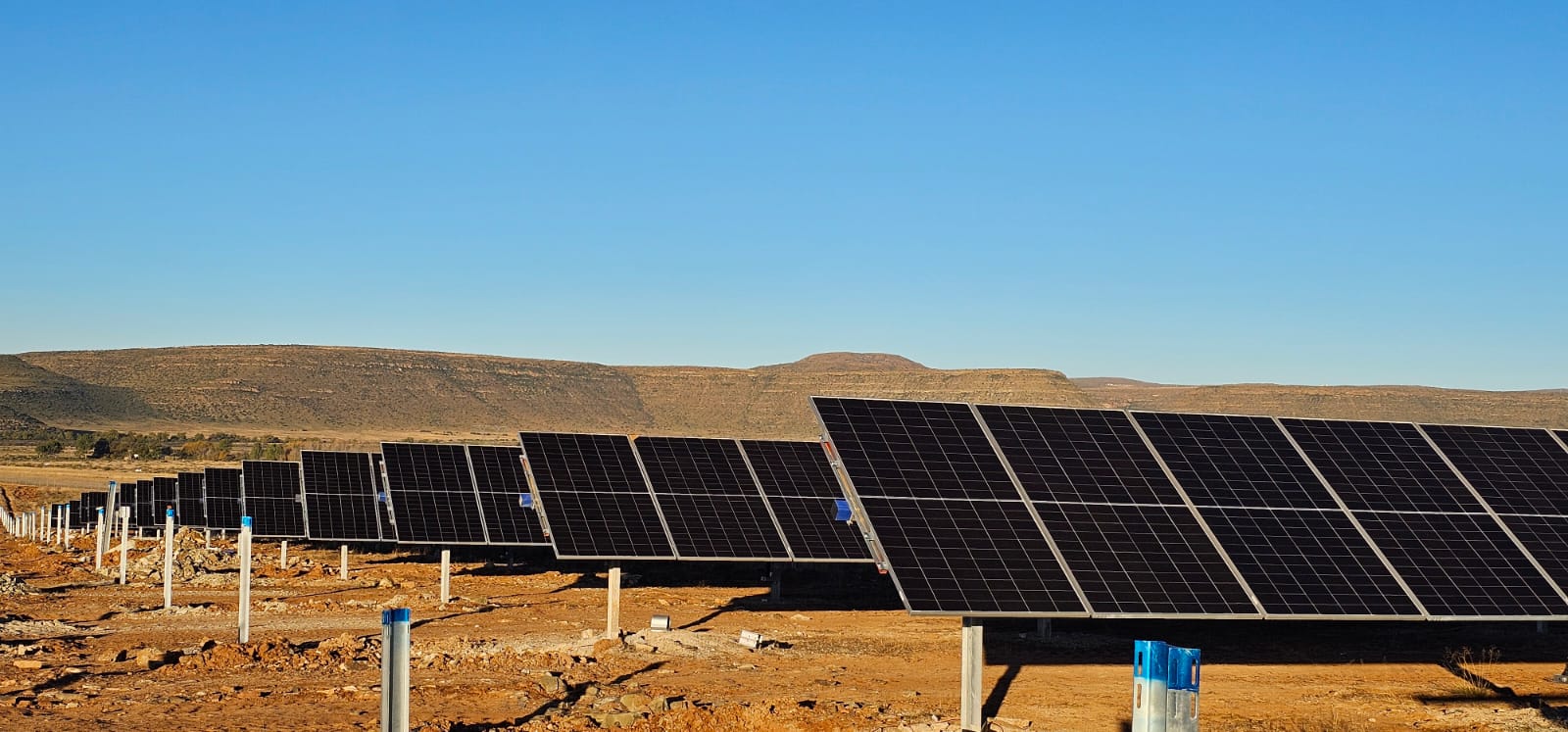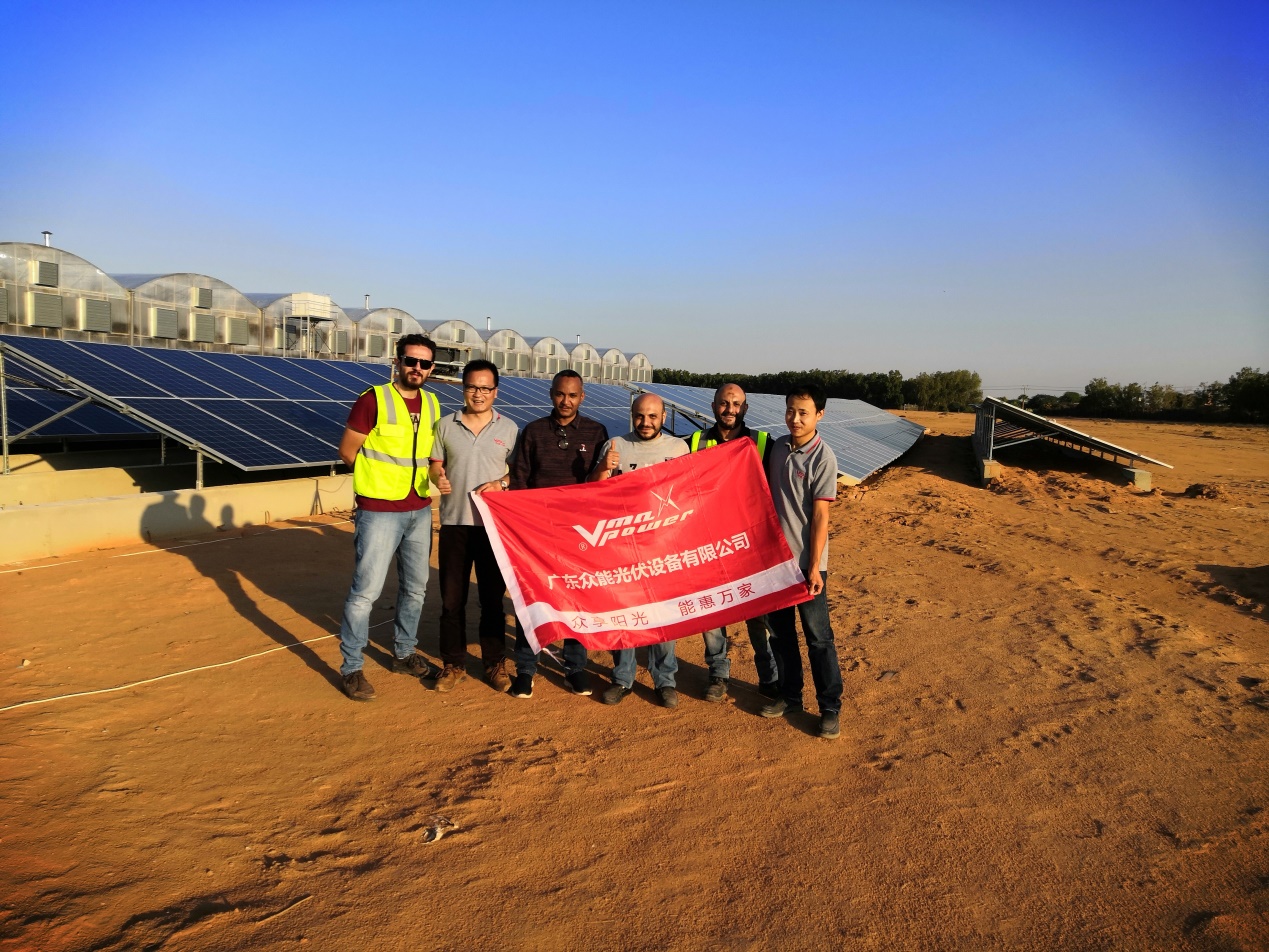As the latest explored desertification control model in recent years, photovoltaic desertification control will combine photovoltaic technology with desert control and water-saving agriculture. A protective forest system consisting of grass grid sand barriers and sand fixation forests will be established around the power station. Water saving drip irrigation facilities will be installed under the photovoltaic panels, and green economic crops will be planted to achieve a win-win situation of economic and ecological benefits.
Photovoltaic desertification control is becoming the main battlefield for the coordinated development of China’s new energy base and ecology. As the latest explored desertification control model in recent years, photovoltaic desertification control will combine photovoltaic technology with desert control and water-saving agriculture. A protective forest system consisting of grass grid sand barriers and sand fixation forests will be established around the power station. Water saving drip irrigation facilities will be installed under the photovoltaic panels, and green economic crops will be planted to achieve a win-win situation of economic and ecological benefits.
Faced with a series of challenges, the “Shage Huang” photovoltaic project urgently needs advanced technology and innovative models to break through. Industry insiders believe that the characteristics of the “Shage Desert” region have raised higher requirements for the operation of photovoltaic equipment. In the future, it is necessary to develop photovoltaic power generation technology that adapts to the characteristics of the “Shage Desert” environment, improve equipment reliability and environmental adaptability.
Therefore, Yang Wenbin, Secretary General of the Chinese Society for Desertification Control and Sand Industry, proposed to promote the development of flexible, large-span, and high specification support technology. The traditional bracket design is not suitable for the “Shage Wilderness” area, as the disturbance of wind and sand flow intensifies, which may cause damage or overturning of pile foundations. Developing flexible high specification bracket technology and promoting the upgrading of related technologies is one of the important directions to support the development of the “Shagehuang” photovoltaic project.
Faced with the terrain challenges in the “Shage Desert” area, more and more photovoltaic companies are turning to precision manufacturing, making progress in areas such as bracket structure, component performance, and intelligent operation and maintenance through technological innovation and systematic solutions.
The climate in desert areas is arid, water resources are scarce, vegetation is sparse, soil is prone to wind erosion, ecological damage is easy, and restoration is difficult. During the construction process of photovoltaic power plants, it is inevitable to disturb fragile ecosystems, damage vegetation and soil crust. If not scientifically repaired, it can easily cause local wind erosion or wind accumulation, exacerbate wind and sand hazards, and directly affect the efficiency and working hours of photovoltaic conversion. How to truly achieve complementarity between photovoltaics and desertification control has become an important issue in the industry.
If photovoltaic modules are installed, they can prevent direct sunlight, reduce surface water evaporation by 20% to 30%, and also lower wind speed, which is beneficial for improving the living environment of plants.
From ‘sand entering and people retreating’ to ‘green entering and sand retreating’, from single sand control to industrial symbiosis, these changes confirm the feasibility of ‘harmony between people and sand’. Photovoltaic desertification control will achieve three major transformations – the energy structure will shift from fossil dominated to clean dominated, ecological governance will shift from passive defense to active restoration, and the economy of sand areas will shift from “relying on the sky for food” to “seeking benefits from light”.
Multifit Solar has been committed to researching photovoltaics for many years and has many desert photovoltaic system projects both domestically and internationally. Multifit Solar have extensive experience in building efficient and high-quality photovoltaic arrays in deserts. Photovoltaic projects in Saudi Arabia have been generating electricity steadily for over 10 years, with very few problems. Multifit Solar has its own team of engineers who can customize according to customer needs. If you have special requirements in photovoltaic construction, please choose Multifit Solar!
Post time: Aug-13-2025


